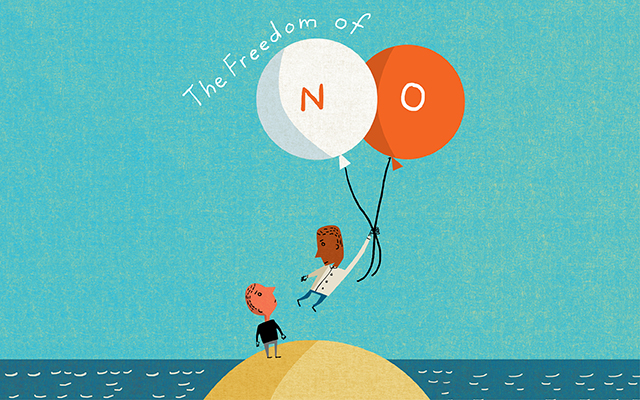Most of us pack our calendars to the gills in an effort to get more done. We commit to more than we should, assuming that we’ll somehow squeeze it all in. Often, we ignore the consequences of overscheduling until we become so exhausted we can’t keep up, sometimes to the detriment of our health and our closest relationships.
So how can we stop overscheduling? Admitting we have a problem is the first step. But actually breaking our addiction to overscheduling requires acknowledging our limits, observing our patterns, and clarifying the values that make our lives worth living in the first place.
“When you are overscheduled, you have no time to reflect on your priorities and your to-do lists, and you very easily get caught up in — and spend an enormous amount of time on — things that are not necessarily important,” says Julie Morgenstern, author of SHED Your Stuff, Change Your Life.
Moving away from this sort of “what next?” reactivity is the first step to creating a manageable schedule. That means taking time to reflect on which tasks you really need to accomplish now, and which can wait or be dropped entirely.
Once you prioritize things, here are some additional tips for taking control of your schedule:
1) Build in buffer zones.
When you’re scheduling an activity or a deadline, pencil in a “buffer zone” — say, 15 to 30 minutes before and after each significant task — rather than scheduling items back-to-back. Including buffer zones serves a number of functions:
First, it builds in the breaks you need to be effective and acknowledges that virtually all tasks require some kind of mental and physical transition time.
Second, it helps you tend to unexpected items that crop up during the day. Meetings, in particular, tend to involve both preparatory and subsequent tasks, and creating a zone of time to accommodate those demands keeps them from contributing to a full-blown cascade of lateness.
2) Know when you work best.
Everyone has peak times of energy, creativity, and mental focus — and at times those resources lag. Pay attention to this ebb and flow and schedule your commitments accordingly: Plan to accomplish demanding tasks when you’re likely to be charged up; the least important or challenging when you’re more likely to have low energy or needing some kind of break. Working with your natural energy patterns will allow you to accomplish more in less time — and with less effort.
3) Understand your limits.
Many of us don’t know how long it actually takes to complete routine tasks during our day, and as a result we have no clue about how much time to allot to various activities. Morgenstern suggests timing yourself doing the same task (such as creating a meeting agenda or sending a memo) on three different occasions and then determining the average. That number will give you a good guideline to follow when making similar future time commitments.
Alternatively, you can start by doubling the amount of time you think something “should” take. This will probably get you close to the actual time requirement, and you can always use any leftover time to get a head start on your next task. Finally, avoid scheduling more than one ultra-demanding task for the same day. It’s a recipe for exhaustion and anxiety.
4) Harness the power of technology.
Turn off your email notifications, and close down any social networking or instant-messaging tools before you begin your work session. Set a timer on your phone or watch to alert you when your allotted time is almost up. If you see that you are running significantly behind as your day’s agenda progresses, proactively reschedule or delegate any items that can’t realistically be accomplished within the confines of your current schedule.
5) Fight the urge to multitask.
Performance psychologist Jim Loehr, EdD says multitasking is not the productivity maximizer many think it is. In fact, he says, it works against effective time use. “People get the sense — because there is so much on their plate — that they have to be able to do a number of things simultaneously,” Loehr explains. “But the energy signal in a human’s focusing system is binary. You are either focused or you are not. If you have 10 balls in the air, nine of them are in free fall.”
6) Honor the priority of the moment.
As an extension of the multitasking wisdom above, designate specific hours for work, family, and self-care, and don’t let them bleed into each other. Writing staff performance reviews or answering emails while trying to interact with someone you love doesn’t give either commitment the attention it deserves. Worse, it will likely leave everyone involved feeling both frazzled and frustrated, creating a negative domino effect on the activities and interactions that follow.
This originally appeared in “Back on Schedule” in the January-February 2010 issue of Experience Life magazine.




This Post Has 0 Comments